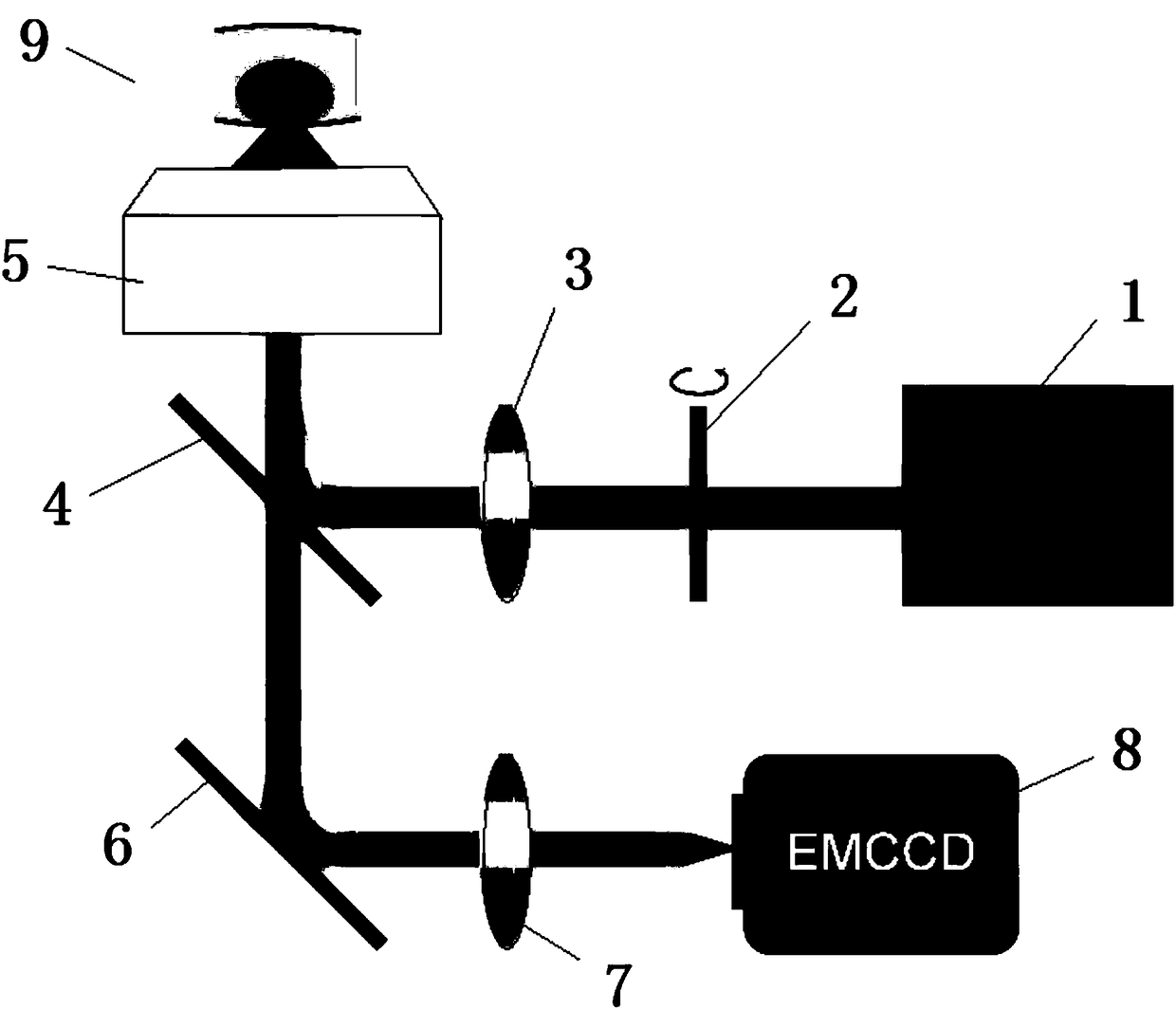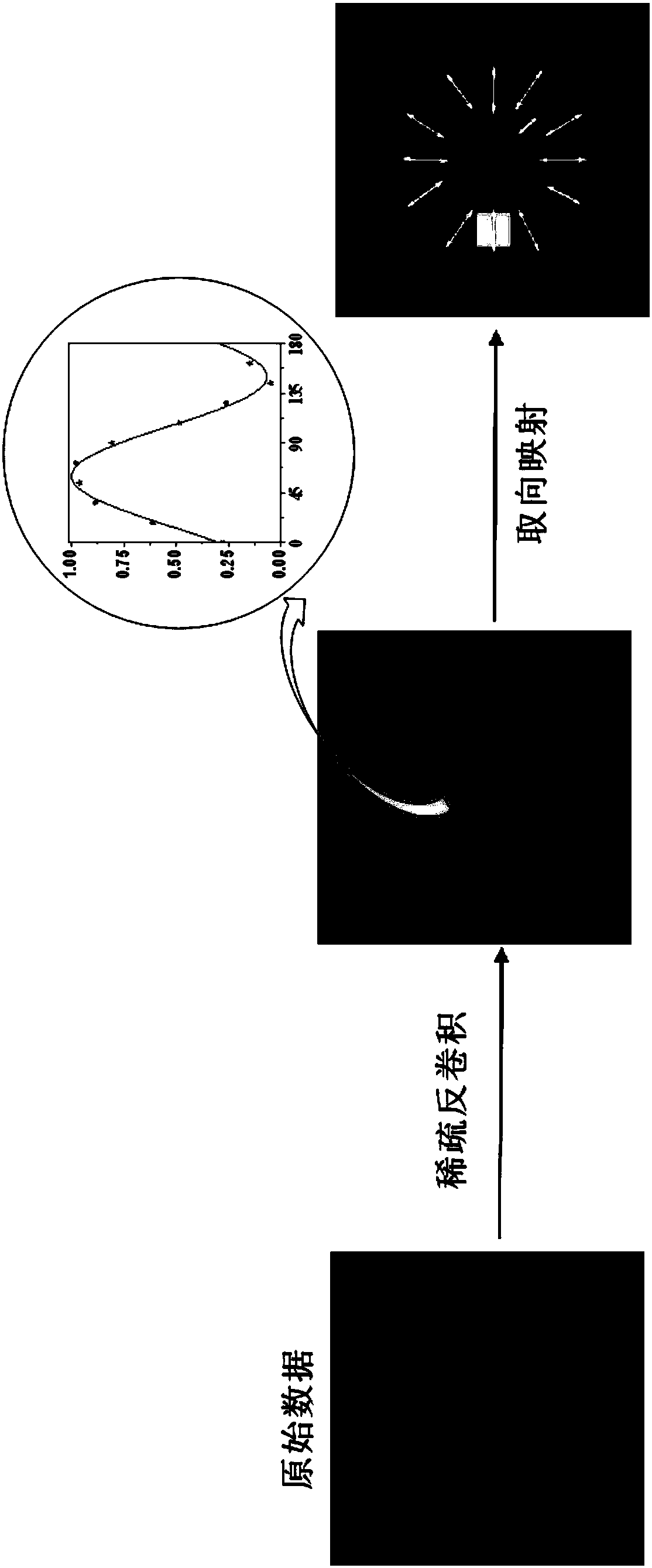A Method for Super-resolution Dipole Orientation Analysis
A dipole and super-resolution technology, applied in the field of super-resolution imaging, can solve problems such as low time resolution and limited observation ability of living cells, and achieve the effects of improving accuracy, anti-noise and stability, and improving effectiveness
- Summary
- Abstract
- Description
- Claims
- Application Information
AI Technical Summary
Problems solved by technology
Method used
Image
Examples
Embodiment Construction
[0028] The present invention will be described in detail below in conjunction with the accompanying drawings and embodiments.
[0029] The invention provides a method for realizing super-resolution dipole orientation analysis. The method is based on the fact that fluorescent proteins have dipole characteristics, and then uses fluorescent proteins to mark target proteins. Under the condition that the two proteins form a rigid structure, by exciting to study fluorescent protein dipole orientations, allowing analysis of structural changes in the target protein. The present invention specifically comprises the following steps:
[0030] 1) if figure 1As shown, a micro-imaging system is set, and the micro-imaging system adds a half-wave plate on the basis of a wide-field fluorescence microscope (epi-fluorescence microscope), which includes a laser light source 1, a half-wave plate 2, a collimator lens 3, two Chromatic mirror 4, objective lens 5, reflecting mirror 6, converging len...
PUM
 Login to View More
Login to View More Abstract
Description
Claims
Application Information
 Login to View More
Login to View More - R&D
- Intellectual Property
- Life Sciences
- Materials
- Tech Scout
- Unparalleled Data Quality
- Higher Quality Content
- 60% Fewer Hallucinations
Browse by: Latest US Patents, China's latest patents, Technical Efficacy Thesaurus, Application Domain, Technology Topic, Popular Technical Reports.
© 2025 PatSnap. All rights reserved.Legal|Privacy policy|Modern Slavery Act Transparency Statement|Sitemap|About US| Contact US: help@patsnap.com



